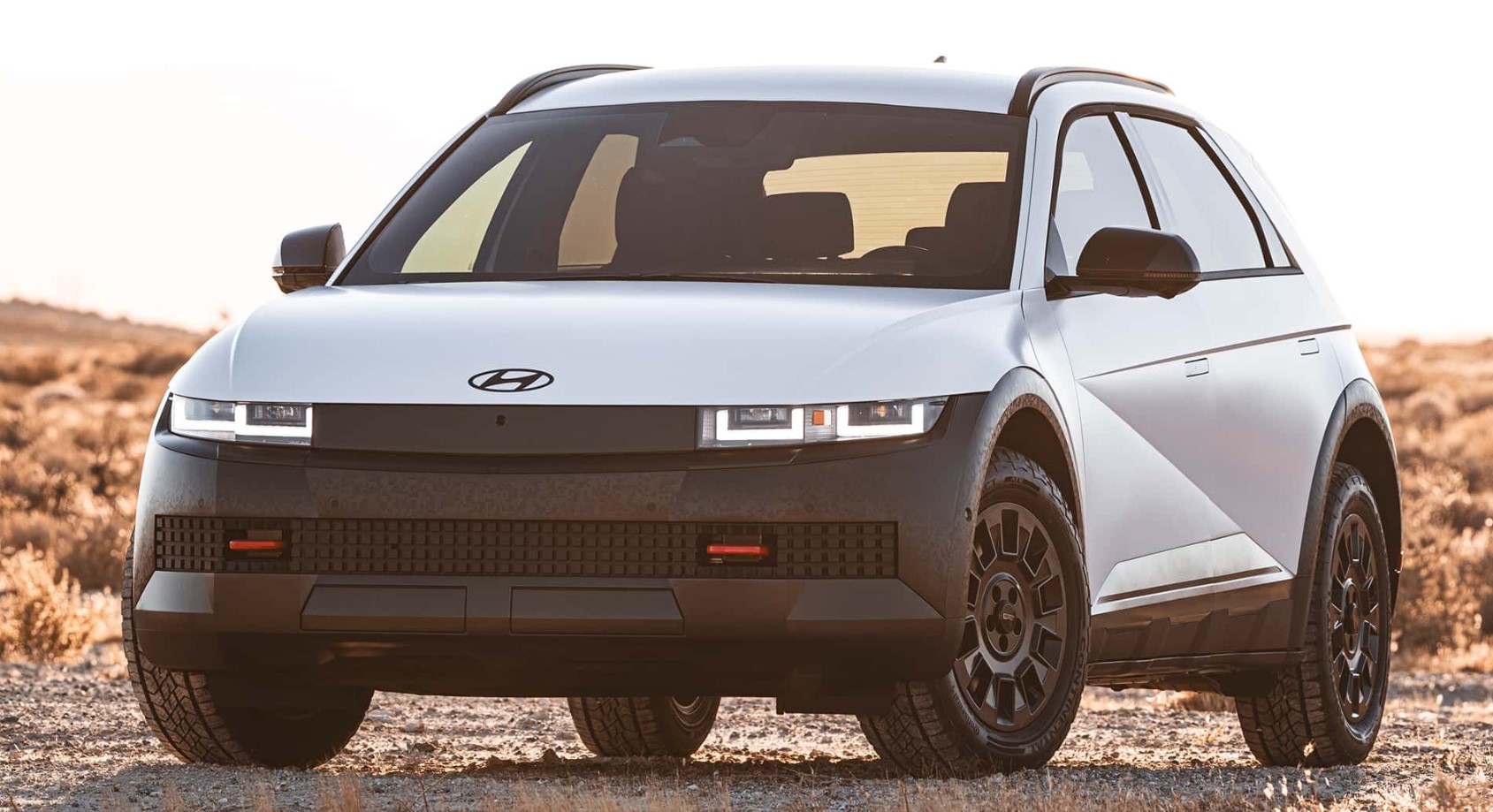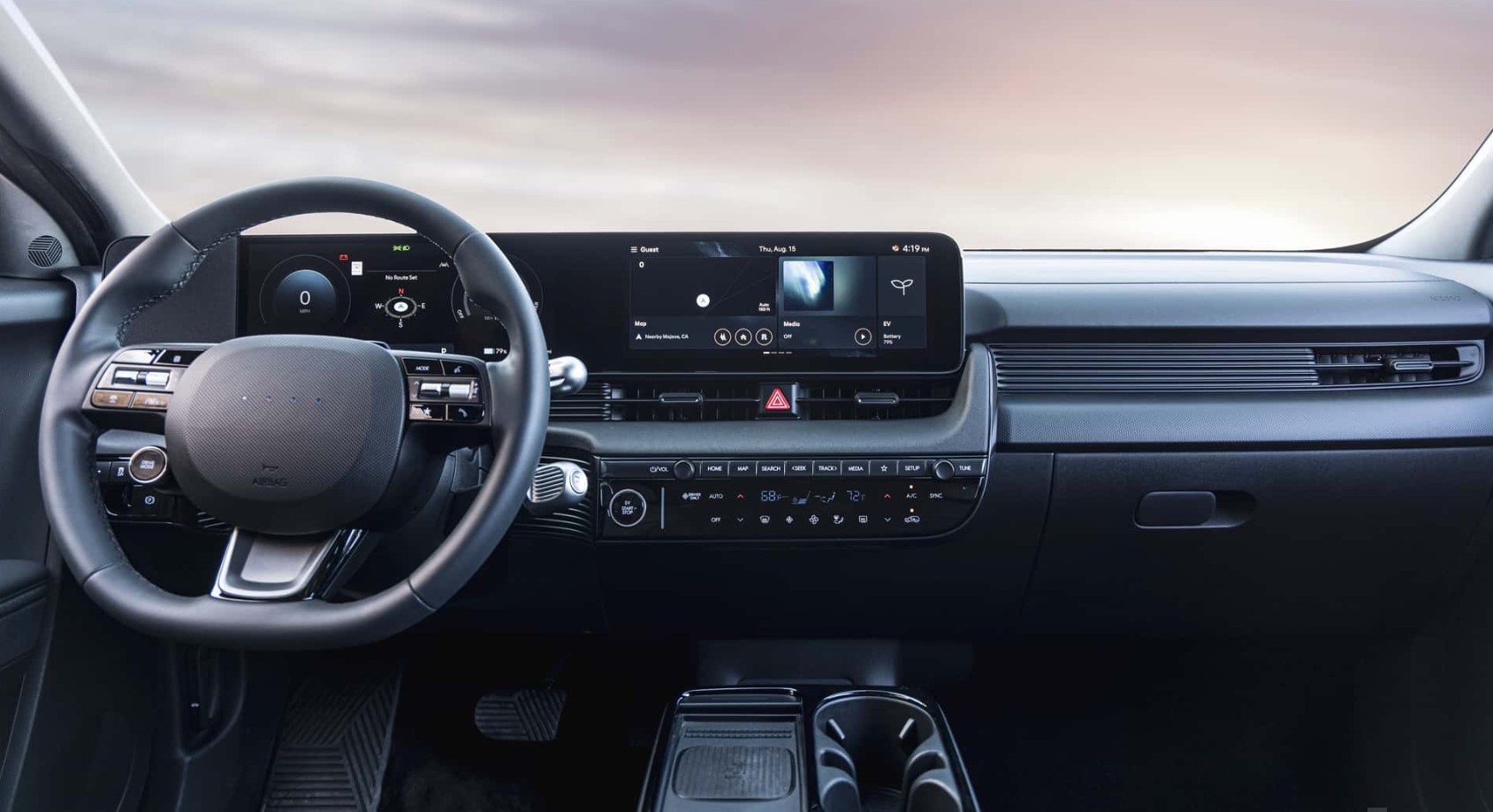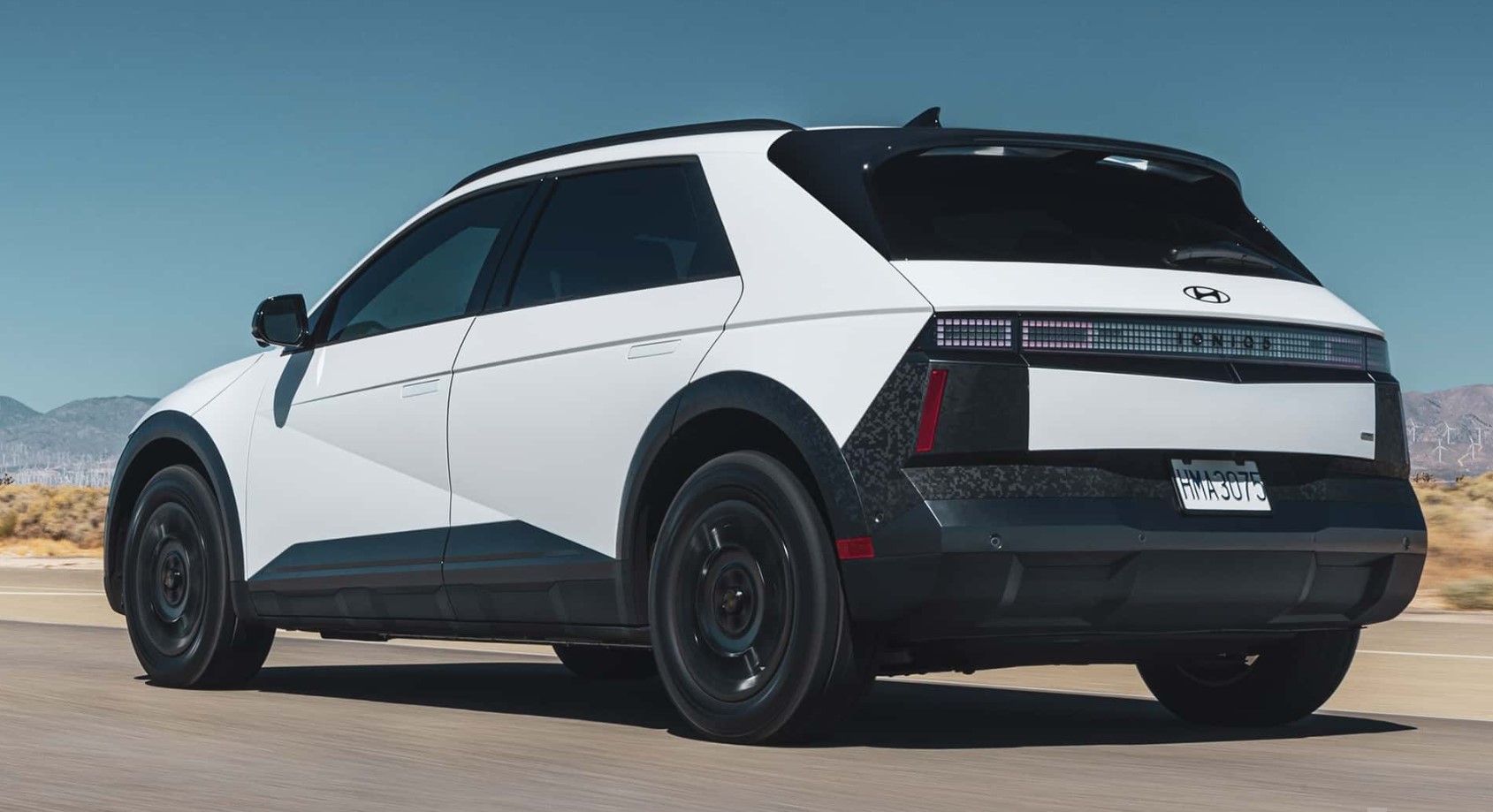2027 Hyundai Ioniq 5 Specs, Redesign, Interior – With the release of the sleek Ioniq 5, Hyundai Motor Group is officially transitioning to electric vehicles. At its 2021 debut, the manufacturer’s first battery-powered car drew me in with its sharp angles and pixelated lighting. Also, after my first ride, I knew it would be a great addition to my fleet of inexpensive electric vehicles.
The Ioniq 5 should put minds at ease of everyone planning to switch to electric vehicles. The manufacturer’s promises are supported by features like a long range, rapid charging, and a stylish style, which are recognizable from their successful combustion and hybrid car lines.
Furthermore, it is one of the few electric vehicles now on the market that can be charged in either direction with a simple and affordable converter. This feature offers unparalleled utility, adaptability, and energy security when compared to others on the market for cars. 2027 Hyundai Ioniq 5 Specs
2027 Hyundai Ioniq 5 Redesign and Update Plan
Exterior & Interior
The two 12.3-inch screens of the Ioniq 5 are similar in terms of size and quality, yet they have different functions. The digital instrument cluster, which is located on the left screen, shows data such as range, battery life, and speed. Also, the steering wheel controls allow you to access a number of EV functions that you may personalize.
Using the right-hand touchscreen, you can access the primary infotainment interface. It’s well-organized and, aside from a few electric vehicle-specific settings, looks almost identical to the UI found in any combustion or hybrid vehicle made by Hyundai Motor Group.
You may utilize your preferred navigation applications such as Google Maps, Apple Maps, or Waze, in addition to the superb integrated navigation system that considers your battery life and local charging stations when you plot your route, all because of the fundamental compatibility with Android Auto and Apple CarPlay.
If the Ioniq’s wireless charging pad could enable wireless connections rather than only wired ones, it may be more handy for smartphone mirroring. The only way to get wireless is to use plain old Bluetooth.
The BlueLink+ cellular data connection powers a lot of the onboard electronics, including charging station live data, linked destination search, remote vehicle monitoring, charge scheduling, and more.
In contrast to earlier model years, BlueLink+ will not cost anything in 2027 and beyond. Therefore, you may continue to enjoy the perks you choose without having to renew your membership every three years. Unless you’re interested in shelling out more cash for the integrated Wi-Fi Hotspot feature.
None of the aforementioned features will be available as options unless you upgrade to the SEL trim. Nevertheless, you’ll need to upgrade if you’re after a few more features, such as the Hyundai Digital Key, which allows you to unlock and start the car using a compatible iPhone or Android phone instead of a key fob.
For additional features like a large sunroof, a sliding ottoman that fits beneath the driver’s seat, and a head-up display positioned on the windshield, go for the Limited trim level. As you wait for a charge to complete, feel free to stretch out and relax.
The widespread acceptance of once pricey technology accessories, like the SmartSense safety package on the Ioniq 5, is a prime illustration of this tendency. With technologies like Forward Collision Avoidance braking assistance, Highway Driving Assist (HDA1) adaptive cruise control with Lane Keeping Assistance steering, and more, this vehicle enhances safety and reduces strain on lengthy travels.
There should also be haptic steering wheel stimulation to warn the driver when they are entering a busy lane, a rearview camera, and cross-traffic alarms in all new vehicles.
The SEL package comes with an upgraded version of Highway Driving Assist (HDA2), which instead of merely locking onto the middle of the road uses “machine learning” to improve stop-and-go logic and give more realistic lane separation.
Additional parking distance sensors are available for SEL, and improved front collision avoidance now checks intersections for cross-traffic.
The top-tier Ioniq 5 Limited comes with a surround-view camera system that aids with precise parking and a Blind Spot View Monitor that, when the turn signal is activated, displays a camera view of the lane ahead in the instrument cluster. Because I was often checking behind me to indicate lane changes, I rarely saw or used the blind spot camera, although I can understand how it may be useful in low-light conditions.
The most innovative and useful function of the Ioniq 5, Remote Smart Parking Assist, is included in the Limited edition. When the driver exits the car and turns on the remote start feature, they may park the electric vehicle remotely by pressing a button on the key fob. The Ioniq can only travel straight when the road is clear and the driver stays a safe distance away.
As an example, if someone parks too near to you, you may utilize this to remotely exit the area and come back when it’s clear. Because my garage is too small to open the doors after backing in, I appreciate using the function to pull the electric vehicle in and out. However, I would not dare do it in public very often; however, it is a great party trick. 2027 Hyundai Ioniq 5 Specs
2027 Hyundai Ioniq 5 Specs
Engine & Performance
Two battery choices are available for the 2027 Ioniq 5, one for each trim level. There is a 58 kWh battery included with even the most basic SE Standard Range variant. This can spin the back wheels with 258 lb-ft of torque using a single electric motor that produces 125 kW (225 HP).
There is more than enough power for responsive and agile performance on both highways and in town, thanks to the EV’s rapid torque delivery. Even though the Standard Range, the lightest model in the series, travels at an estimated 3.3 miles per kWh, you might be more interested in the 220 miles per charge range that the EPA predicts.
The addition of a second 74 kW motor to drive the front wheels might make all-wheel drive even better on higher trim levels, but I still recommend long-range RWD. With all four wheels engaged, the power and torque reach an impressive 446 lb-ft and about 320 horsepower, respectively.
With two motors instead of one, the acceleration from zero to sixty miles per hour is 4.4 seconds, and it has somewhat superior grip on snowy or rainy roads. Additionally, acceleration is much enhanced. In order to maintain a reasonable range, the front motor decouples automatically when it is not in use; this feature is on-demand.
(You might also try turning it off manually by going into Eco driving mode.) The added expense of all-wheel drive reduces the claimed efficiency to 2.9 miles per kWh and the range to 260 miles per charge.
Connected to a 250 kW 800-volt station, the Ioniq 5 can go from 10% to 80% in just 18 minutes, making it one of the fastest-charging electric vehicles I’ve tested. A number of variables, such as the battery’s state, the surrounding temperature, and the capacity of the charger, affect the real duration that a battery is really linked to a charger.
Nearly no stations in my area were able to achieve a peak output of greater than 227 kW when actually used, despite the fact that my rapid charging sessions were rather short, typically averaging about 20-30 minutes.
With level 2 home charging, outputs can reach 10.9 kW, and a smaller battery may be fully charged from 10% to 100% in under 6 hours, or the Long Range pack in 7 hours and 10 minutes.
Despite prior claims by Hyundai that this feature may be available in the future (perhaps with an adapter), it is unclear whether or not the Ioniq 5 can connect to Tesla’s NACS standard. Under the conventional motorized charging door, you’ll find the CCS/J1772 charging stations. Until then, drivers can use them.
One of the most astounding features of the Ioniq is the vehicle-to-load power transfer, which is made possible by the electric vehicle design. The user may convert the J1772 charging input to a NEMA 5-15 AC output using an affordable converter, all thanks to its bidirectional power technology. Customers can plug in whatever AC-powered item or appliance they choose to this ordinary household outlet, provided their use doesn’t go over the 1.8 kW maximum demand.
While it won’t be able to power your complete house like a fixed battery installation or a vehicle-to-home arrangement from Ford or Chevy might, its capacity is more than enough to operate a chest freezer or refrigerator for a few days. its may be a lifesaver in locations where power outages occur, since it could store a lot of food.
Customers may enable or disable V2L and set reserve limits for battery capacity in 10% increments using the software on the dashboard of the Ioniq 5. This ensures that they can drive home or to a charger with adequate range after a long day of tailgating or powering a campground.
Under the back seats of the Limited trim level is an extra 15-amp, 120-volt outlet installed inside. This may charge portable electronics like laptops and tablets or provide additional AC power.
2027 Hyundai Ioniq 5 Fuel Economy
All three SE Limited, SEL, and Long Range trims come standard with an upgraded 168 kW (225 horsepower) rear engine and a bigger 77.4 kWh battery. Off the line and in town, acceleration feels almost the same since total torque (still 258 lb-ft) remains constant.
A little extra peak power, on the other hand, improves responsiveness and highway performance. The larger and heavier battery provides more range (303 miles on a single charge) and somewhat higher efficiency (3.4 miles per kWh) on the EPA test cycle. Having a larger battery clearly offers a few benefits. 2027 Hyundai Ioniq 5 Specs
2027 Hyundai Ioniq 5 Release Date & Price
The base SE Standard Range model of the 2027 Hyundai Ioniq 5 costs $43,195 (not including the $1,395 destination fee) and has a 220 mile range. Not a huge problem if you don’t want a lot of range on a daily basis and are in a region with moderate weather most of the time. The 303-mile, $47,245 SE Long Range is an excellent entry-level option if you like longer excursions or live in a region where extreme temperatures during summers or winters reduce range.
A hands-free power liftgate, phone-as-key technology, and machine learning driving assistance are some of the wonderful additions that come with the $49,795 SEL trim level. Finally, the most expensive Limited trim level comes equipped with state-of-the-art amenities like surround cameras, a head-up display, and Remote Smart Parking Assist, pushing the price range to $55,895.
Personally, I think most drivers would be better off sticking with the SE Long Range RWD. Most drivers probably wouldn’t miss the more complex choices on the Ioniq because the base loadout has so many useful features.
Moreover, I would not advise spending the extra $3,500 to get all-wheel drive (AWD) unless you live in a region that has wet and snowy weather for the majority of the year. You may save money now and in the future with this setup since it increases efficiency and range.
The $7,500 federal BEV/PHEV tax credit might be available to Hyundai if the company moves the Ioniq 5’s assembly and battery production to its new Georgia facility. The EV is now ineligible due to its status as an import. (However, the federal leasing incentive could be a good fit for you.) As soon as the situation changes, we will update the review accordingly.
Note: The details included in this blog post are derived from pre-release material that was accessible when the article was written. If you want the latest information, you should check official sources or call your nearest dealership.
Read Also:
- 2027 Hyundai Nexo Specs, Review, MPG
- 2026 Hyundai Ioniq 9 EV Dimensions, Specs, Review
- 2026 Hyundai Nexo Price, Specs, Performance
- 2026 Hyundai Kona Electric Interior, Redesign, Dimensions
- 2026 Hyundai Ioniq 9 EV Changes, MSRP, Dimensions



